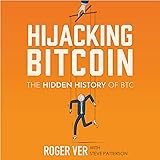The Goldshell HS1 ASIC miner presents an intriguing option for individuals venturing into residential cryptocurrency mining, particularly for Handshake (HNS). As explored in the video above, this compact device offers a unique proposition for home enthusiasts, blending accessibility with the inherent complexities and risks of the crypto market.
Understanding the Goldshell HS1: A Closer Look at Residential ASIC Mining
The Goldshell HS1 stands out as an exceptionally small and quiet ASIC miner, designed to fit comfortably into a home environment. Unlike many industrial-grade mining rigs, which often produce significant noise and heat, the HS1 is remarkably discreet.
In fact, its noise level is comparable to a fan operating on a low to medium setting, making it suitable for residential deployment. Physically, the device is no larger than the palm of a hand, barely taller than a common Chapstick canister.
According to specifications, the Goldshell HS1 is engineered to achieve a hash rate of 50 Gigahash per second (GH/s) while consuming a modest 57 watts of power. However, practical testing often reveals slight variations; in our hands-on evaluation, the unit typically consumed around 62 watts at the wall, measured with a standard wattmeter for 120-volt US residential electricity.
Decoding Handshake (HNS) Mining Profitability with the Goldshell HS1
When considering any crypto mining endeavor, profitability remains a core concern, and the Goldshell HS1 for Handshake (HNS) mining is no exception. While the miner’s technical specifications are impressive for its size, real-world earnings require careful calculation.
Initial projections estimated the Goldshell HS1 to mine approximately 2.2 HNS coins daily. However, accounting for factors like potential downtime—such as a Windows gaming rig automatically updating and pausing operations—the daily output can fluctuate. Despite such interruptions, the miner generally aligns with a projection of around four HNS coins per day.
Financially, this translates to roughly 70 cents in daily revenue before electricity costs. After factoring in an average residential electricity rate of 10 cents per kilowatt-hour (kWh), the net profit can drop to about 50 cents per day. This calculation is crucial for anyone evaluating the break-even point for their investment.
Considering a newer, faster model of the Goldshell HS miner, which offers double the speed for approximately $300, one might theoretically earn around $1 per day. At this rate, the estimated break-even period for the initial investment would be a substantial 300 days, assuming no significant changes in market conditions or mining difficulty. This contrasts sharply with the potential of larger, more powerful miners, like the Goldshell HS3, which can generate $22 to $25 daily at a 5-10 cent/kWh electric rate, but demand a $5,000 investment and consume 2,000 watts, requiring specialized 220-240 volt industrial-grade power.
The Volatility of Handshake (HNS)
Profitability is not static in the crypto world. The value of Handshake (HNS) itself can introduce significant volatility. Over a 30-day period, HNS experienced a 26% decline in value, underscoring the inherent risks. While its daily trading volume hovers around $1 million, accessibility to favorable exchanges can be a challenge, particularly for US citizens, who may find themselves limited to platforms with less optimal trading conditions.
Setting Up Your Goldshell HS1 Miner for Handshake
Despite its reliance on a host computer, the setup process for the Goldshell HS1 is remarkably straightforward, especially when compared to other PC-tethered mining devices. The process involves a few key steps to get your Handshake mining operation running smoothly.
- **Power Connection:** The HS1 typically uses a laptop-style power supply, offering flexibility with various compatible power sources.
- **USB Connection:** The miner connects directly to your computer via USB. This direct connection necessitates a driver download to ensure your computer recognizes the device.
- **Software Installation:** After installing the necessary drivers, you’ll need to download and launch Goldshell’s proprietary mining software. This intuitive interface is designed to simplify the configuration process.
- **Pool Configuration:** Within the software, you can easily input your mining pool details. This includes the pool address (e.g., F2 pool for Handshake), the specific port number, and your Handshake wallet address. Interestingly, some users, including Vosk, found that leaving the “worker name” field unchecked or blank allowed the miner to connect more consistently.
- **Start Mining:** Once configured, ensure the device is selected within the software interface, then simply click the “Start Mining” button. The software will then display real-time performance readouts, including hash rate and the status of connected miners.
The USB connection, while simplifying initial setup, presents a potential downside: the miner’s operation is contingent on the host computer running without interruption. An unexpected system update, as demonstrated in the video, can lead to lost mining time. However, the user-friendly Graphical User Interface (GUI) significantly streamlines the management of your Goldshell HS1, making it accessible even for those new to the intricacies of ASIC mining.
Navigating the Risks of Altcoin Mining and Handshake
The world of cryptocurrency mining is inherently speculative, and while the Goldshell HS1 offers an entry point, it’s vital to approach Handshake (HNS) mining with a clear understanding of the associated risks. Handshake, described as an “experimental peer-to-peer root naming system” and “decentralized naming and certificate authority,” represents a niche altcoin.
Unlike established cryptocurrencies like Bitcoin or Ethereum, altcoins can experience greater price volatility and liquidity challenges. A recent 26% drop in HNS value over 30 days highlights this instability. Furthermore, selling mined HNS coins can be problematic depending on your geographic location and accessible exchanges. Many miners, especially in regions like the US, might find their options limited to less liquid or less favorable trading platforms.
The “holding the shovels while they hold the gold” analogy is particularly relevant here. Large-scale manufacturers and mining operations are often collecting fiat currency or major cryptocurrencies by selling their hardware and the coins they mine, rather than accumulating smaller, riskier altcoins. This dynamic suggests that profit margins can quickly erode for individual miners as more powerful hardware enters the market, increasing network difficulty and decreasing individual profitability.
Therefore, some miners opt for services like NiceHash or Mining Rig Rentals, which allow them to rent out their hash power and receive payouts in more stable cryptocurrencies like Bitcoin or Ethereum. This strategy can mitigate direct exposure to the volatility of specific altcoins, providing a more predictable revenue stream.
Residential ASIC Mining: Is It for You?
The Goldshell HS1, while not a path to overnight riches, carves out a niche for a specific type of crypto enthusiast. It’s an appealing device for hobbyists who enjoy tinkering with technology and exploring new facets of the blockchain ecosystem. For those with a discretionary budget, spending $300 on a “cool little hobby miner” that allows for experimentation can be a rewarding experience.
However, it’s crucial to distinguish between a hobby and a serious investment. Attempting to build a large-scale mining farm with multiple HS1 units, even with the manufacturer’s limit of three per customer, would be an inefficient and highly risky venture compared to deploying industrial-grade hardware. The primary takeaway from the Goldshell HS1 experience is the emphasis on fun and learning, rather than guaranteed substantial returns.
Ultimately, engaging in residential crypto mining with devices like the Goldshell HS1 should be viewed through the lens of calculated risk and personal interest. It’s an opportunity to dive hands-on into the world of ASICs and altcoins, but always with a realistic understanding of market volatility and the competitive landscape.







